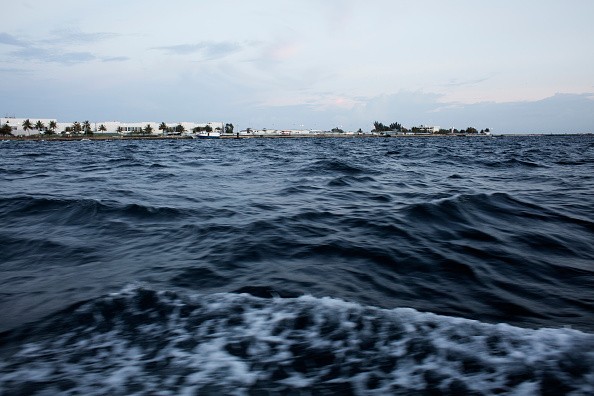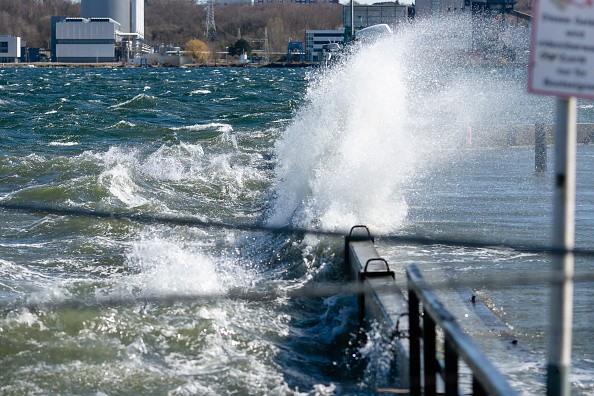Hurricanes and other extreme weather events have already become more frequent and severe due to climate change throughout the planet. However, there is a smaller, less visible menace on the horizon that may devastate America's coastlines.

Nuisance Floods
High-tide floods, often known as "nuisance floods," occur in coastal locations when tides rise beyond the daily normal high tide by roughly 2 feet (0.6 meters) and begin to flood streets or seep down storm drains. True to their moniker, these floods are more of a nuisance than a disaster, inundating streets and houses, forcing businesses to close, and overflowing cesspools - but the longer they persist, the more damage they may cause.
According to the National Oceanic and Atmospheric Administration (NOAA), more than 600 of these floods occurred in the United States in 2019. However, a new NASA-led study predicts that nuisance floods in the United States would become considerably more common as early as the 2030s, with most of the country's coastline likely to suffer three to four times as many high-tide flood days each year for at least a decade.
Unevenly Distributed Flooding

The study, published in the journal Nature Climate Change on June 21, warns that these extra flood days will not be evenly distributed throughout the year but will likely cluster together over a few months; coastal areas that currently experience two or three floods per month may soon face a dozen or more.
Preparedness
According to the study, if communities don't start planning for these longer coastal flood seasons now, they will cause severe disruptions to lives and livelihoods.
In a statement, main research author Phil Thompson, an assistant professor at the University of Hawaii, stated, "It's the cumulative effect over time that will have an influence. A firm cannot operate with its parking lot underwater if it floods 10 or 15 times each month. People lose their employment as a result of their inability to get to work. As a result, sewage ponds have become a public health concern."
This anticipated rise in flood days is due to several causes.
For starters, there's the issue of rising sea levels. As the atmosphere warms due to global warming, glacier ice melts at an unprecedented rate, releasing massive volumes of meltwater into the ocean. As a result, according to NOAA, worldwide average sea levels have increased 8 to 9 inches (21 to 24 cm) since 1880, with roughly a third of it occurring in the previous 25 years.
Depending on how effectively humans limit greenhouse gas emissions in the following decades, sea levels might rise anywhere from 12 inches (0.3 m) to 8.2 feet (2.5 m) over 2000 levels by 2100.
Moon Cycle

While increasing sea levels alone will increase the frequency of high tide floods, the cosmos - especially the moon - will aid them.
The moon affects the tides, but the strength of its pull varies from year to year; the moon's orbit has a "wobble," which causes it to shift slightly in relation to Earth on an 18.6-year cycle. As a result, the moon suppresses Earth's tides for half of the cycle, resulting in lower high tides and higher low tides. According to NASA, tides are magnified for the other half of the cycle, with stronger high tides and lower low tides.
We are presently in the tide-amplifying phase of the cycle; the next tide-amplifying phase begins in the mid-2030s. According to the researchers, by that time, global sea levels will have risen sufficiently to make those higher-than-normal high tides extremely problematic.
Moon and Tides

According to the study, high tide flooding would grow fast throughout the whole US coast due to the combined effects of sea-level rise and the moon cycle. According to the authors, high tide flooding will shift "from a localized concern to a national issue with most US coasts being affected" in less than a decade.
In addition, other aspects of the climatic cycle, such as El Nio occurrences, will cause these flood days to cluster around specific times of the year, culminating in months of persistent coastal flooding.
According to the authors, as frightening as this pattern may appear, it is critical to comprehend for planning purposes.
"Knowing that all of your occurrences are grouped in a certain month, or that you could have more severe floods in the second half of a year than the first - that's useful knowledge," NASA's Jet Propulsion Laboratory research co-author Ben Hamlington said in a statement.
Extreme Weather Events

Extreme weather events may get the attention of the national media as they wreak havoc on America's shores, but high tide flooding will soon be difficult to ignore. Therefore, the authors concluded that it is best to begin preparing now before it is too late.
For more climate and weather updates, don't forget to follow Nature World News!
© 2025 NatureWorldNews.com All rights reserved. Do not reproduce without permission.





